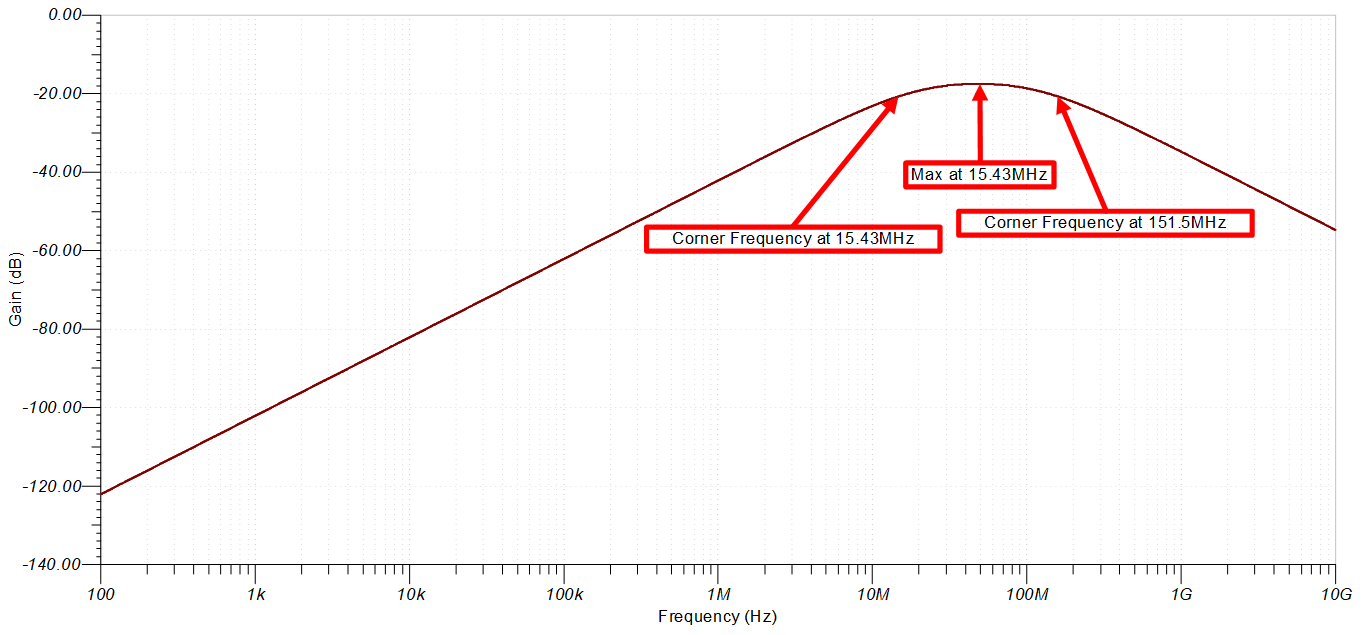SBOA367B December 2019 – June 2022 TLV9001 , TLV9002 , TLV9004 , TLV9051 , TLV9052 , TLV9054 , TLV9061 , TLV9062 , TLV9064
- Designing for TLV90xxS operational amplifiers with shutdown
- Trademarks
- 1 Introduction
- 2 Shutdown Specifications
- 3 SHDN Pin Limits and Connections
- 4 Output Behavior During Enable and Shutdown
- 5 Enable Time and Shutdown Time Factors
- 6 Impact on Commonly Used Circuit Configurations
- 7 Advanced Circuit Functionality Using Amplifiers With Shutdown
- 8 Conclusion
- 9 References
- 10Revision History
 Figure 6-3 Non-Inverting Amplifier
Circuit
Figure 6-3 Non-Inverting Amplifier
CircuitFigure 6-4 displays the AC response of the output voltage while the amplifier is in shutdown. The amplifier is in a non-inverting configuration with a gain of +2 V/V. Once again, set Ri and Rf to 1 kΩ and RLoad to 10 kΩ. From the TLV9002S data sheet specifications, CID is 1.5 pF, CCM is 5 pF, CSHDN is 2 pF, and RSHDN is 10 GΩ.
 Figure 6-4 Non-Inverting Amplifier AC
Response
Figure 6-4 Non-Inverting Amplifier AC
ResponseThe first corner frequency is 15.42 MHz, which is well outside the bandwidth of the TLV9002S. Comparing this plot to that of the inverting amplifier, it is apparent that the maximum gain of this configuration is smaller by about 15 dB. Furthermore, for the bandwidth of the TLV9002S, the gain of the non-inverting circuit is at least 40 dB smaller than that of the inverting circuit. This simulation affirms the theory that an amplifier in shutdown mode will limit the input signal from reaching the output more when in a non-inverting configuration than in an inverting configuration. Most of the time, non-inverting circuits can be used with minimal worry about signals coupling through to the output. However, it is still a good idea to verify the frequency response of the circuit at any frequencies of interest and ensure no downstream issues will arise.